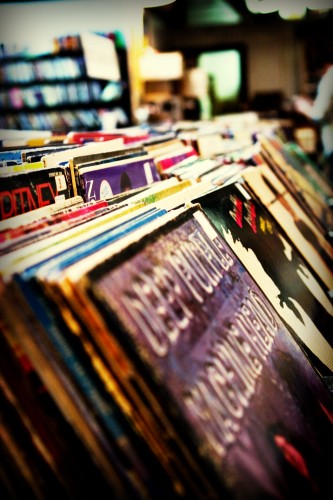While most of us walk past high street charity shops without giving them a second glance, for record collectors they can be treasure troves full of hidden gems. Hidden in the back of dusty goodwill collections in charity shops across the country, are vinyls that can be picked up for literally a few pence, but can be sold to the right people for potentially thousands of pounds.
These stories of diamonds in the rough are legendary within collector circles and are what spur on many to visit charity shops even more than record fairs or specialist stockists.

One such collector is Ken Peters from north Wales, a man who has been collecting vinyl for over 20 years and during that time has managed to find his fair share of hidden gems.
He once bought a limited run of an early Rolling Stones LP at a charity shop in Chester, for literally pocket change, that is now worth close to £500.
It’s widely accepted that the downfall of vinyl was caused by CDs. However, just like many people argue that the popularity of music downloads is causing music to lose its physicality, collectors argue that vinyl is the most robust and permanent way to own music.
“The records you pick up form a diary, they’re a throwback. It’s something solid in your hand that reminds you of what you were doing at that time of your life,” explains Peters.
“Records are so large that you could get a wealth of information and really well produced artwork on their cardboard sleeves. Nowadays people are lucky if they even get the lyrics when they buy a CD,” he said.
Recently, however, vinyl is starting to creep back into music shops across the UK, with everyone from Lady Gaga to British punks Gallows using the format as a way of releasing limited editions of albums. This has spawned not only a whole new generation of record collectors to go out and seek vinyls, but breathe new life into the industry as a whole.
“You can look at it two ways,” muses Peters. “There are two streams of collectors. Financial ones who see a record and buy it because they can pick it up for a fiver from a charity shop, knowing they can sell it on for ten or a hundred times that price.”
“Or there are people like me who may have been interested in music for a long time, or a particular group, and see collecting as not only a hobby but as a way of exposing themselves to all the music they loved in the past,” he says.
“It definitely came back in a big way when bands like the White Stripes began to release coloured vinyls,” comments Jim Penistan, owner of Lincoln-based record shop Back to Mono. “Artists like Florence and the Machine, as well as Lady Gaga, go to a lot of effort to produce some really great gate-folds for their vinyl releases that make them definitive collectors editions.”
When asked if he had ever heard any diamond in the rough stories during his time in the record business he said: “I know a guy that picked up this record for a fiver and now I could probably get a thousand pounds for it at auction,” pointing at a mint condition copy of a Beatles album which is proudly displayed near his shop counter.
It seems the rumours of vinyls death have been greatly exaggerated. The new wave of records being released by current artists seems to be inspiring a younger generation to start their collections. Add to this the mythic stories of picking up priceless gems for a pittance, and it seems the format could finally be entering its second renaissance.
While it may never be as instant or cheap as its high-tech competitors, vinyl is still going strong on turntables across the world, and will continue to do so as long as there are people who, want not only songs when they buy their music, but an experience.

